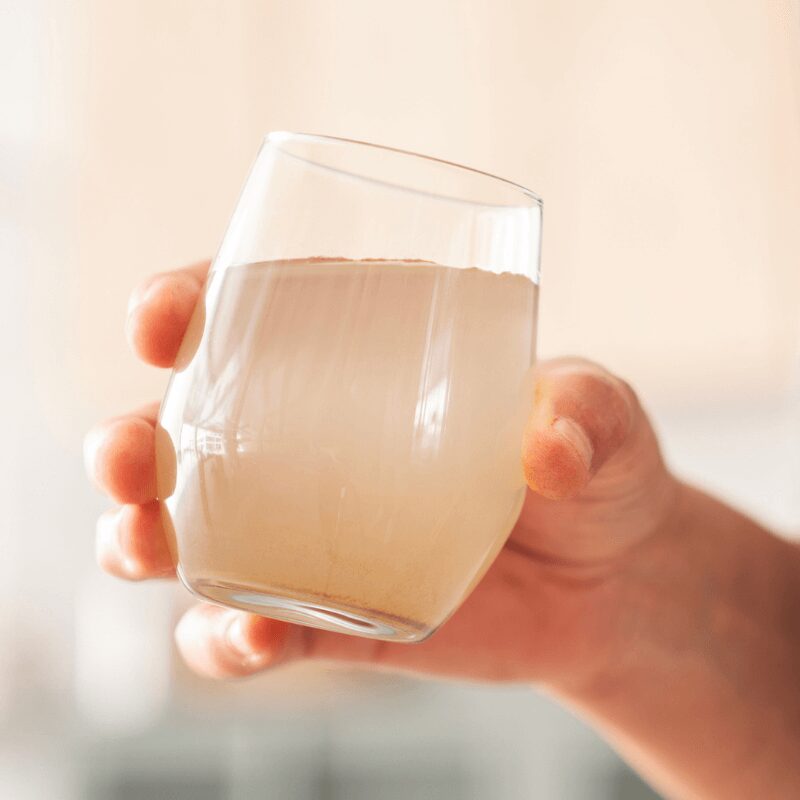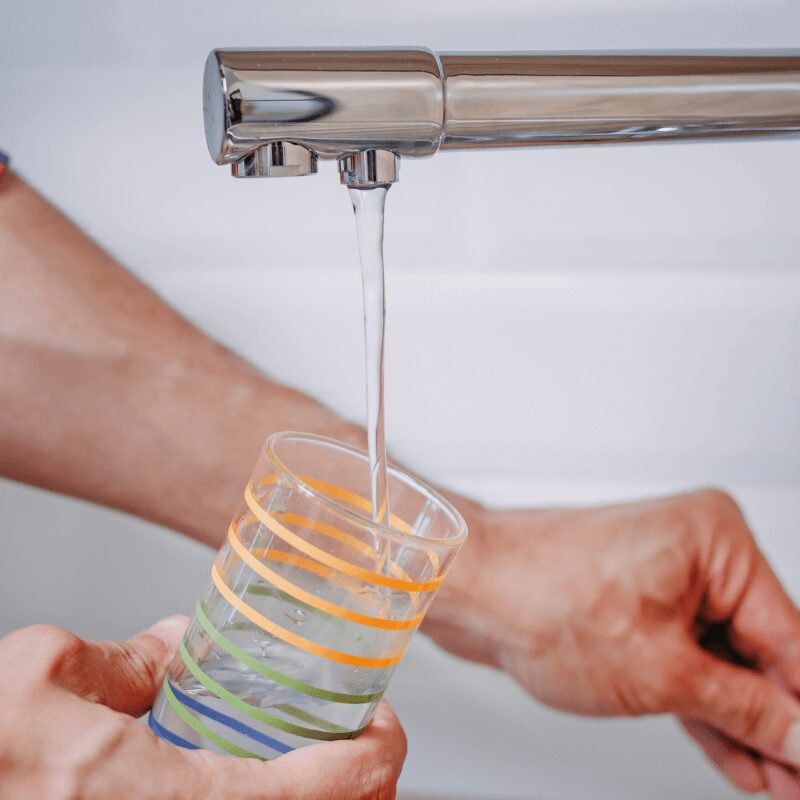7 Reasons Your Home Has Cloudy Tap Water

You fill a glass from the kitchen faucet expecting crystal-clear refreshment—but instead, you’re staring at murky, cloudy water that looks anything but appetizing. Maybe it clears up after a few seconds, or maybe it doesn’t. Either way, it’s unsettling.
If you live in Southern Texas, this scenario might sound familiar. And while cloudy water isn’t always a health hazard, it is usually a sign that something’s not quite right.
At Aqua Clear Water Solutions, we help homeowners across the region identify the contaminants in their water and learn how to address them. Let’s break down the most common reasons for cloudy tap water, how to tell what’s causing it, and what to do next.
7 Reasons Your Tap Water is Cloudy
1. Trapped Air Bubbles
Let’s start with the most harmless (and most common) culprit: air. Sometimes, the cloudiness you see is simply tiny air bubbles in your water. This often happens after maintenance work on municipal lines or when water is under high pressure.
How to tell:
Fill a glass and let it sit for a minute. If the cloudiness rises and disappears from bottom to top, it’s just air—and totally harmless.
What to do:
Nothing. It will usually clear up on its own within a day or two. But if it doesn’t, or it’s happening frequently, it’s worth having your system checked.
2. Hard Water Minerals
Southern Texas is no stranger to hard water, which means high levels of calcium and magnesium in the water supply. These minerals don’t just cause scale buildup—they can also contribute to cloudy water, especially when heated or agitated.
How to tell:
You’ll also notice white residue on faucets, cloudy spots on dishes, or soap that refuses to lather.
What to do:
Install a water softener, like the Kinetico systems we offer at Aqua Clear, to reduce mineral content and eliminate the side effects of hard water.
3. Sediment or Sand in the Pipes
Homes that use well water or older municipal lines can sometimes deal with sediment or sand entering the plumbing. This usually happens after construction or when water flow is disrupted.
How to tell:
If the cloudiness looks gritty, doesn’t settle quickly, or leaves residue at the bottom of your glass, you might be dealing with sediment.
What to do:
A whole-home filtration system can capture sediment before it ever reaches your tap. We offer systems designed to protect your pipes and your drinking water.
4. Municipal Water Treatment Changes
Your local water treatment facility may occasionally change disinfection methods or flush lines, particularly after storms or periods of high demand. These adjustments can release minerals and organic materials, causing temporary cloudy or discolored water.
How to tell:
Cloudiness coincides with local water advisories, boil notices, or recent city maintenance.
What to do:
Check with your local water utility, and if the issue persists or you want to avoid future surprises, consider installing a filtration system that removes chlorine, sediment, and more.
5. Bacterial Contamination
Here’s where things get serious. In rare cases, cloudy water may be a sign of bacterial contamination, particularly in private wells or following natural disasters such as flooding. This is more common in rural or underserved areas of Southern Texas.
How to tell:
Water that smells bad, tastes off, or stays cloudy for long periods—especially when paired with health issues—should be tested immediately.
What to do:
Contact us for professional water testing. We’ll analyze your water and recommend the right disinfection system, such as UV or chlorination, if needed.

6. Pipe Corrosion
If you live in an older home with galvanized steel plumbing, cloudy water could be the result of corroding pipes. As these pipes break down, they release tiny particles of metal that can make your water appear milky or rust-colored.
How to tell:
Cloudiness is usually paired with a metallic taste, staining in sinks or tubs, or water that’s discolored (especially brown or orange).
What to do:
First, test your water for iron or lead. Then talk to a plumber about updating your pipes, and let us help you choose a filtration system that keeps your water clean while you address the root cause.
7. Thermal Expansion in Hot Water
Does your tap water look clear—until you run the hot water? Heating water can change its appearance, especially in homes with hard water or mineral-heavy supply lines. Cloudy hot water is typically caused by gas solubility changes when the water is heated.
How to tell:
Cloudiness only happens with hot water and clears after a few seconds.
What to do:
While not usually harmful, it may be a sign that your water heater needs maintenance or that your water hardness is too high. A softener or whole-home filter can help.

Don’t Guess—Test
While some cloudy water causes are no big deal, others can point to real problems with your water quality or plumbing. Instead of relying on guesswork, let Aqua Clear Water Solutions provide real answers.
We offer:
- Free in-home water testing
- Professional analysis of hardness, sediment, and contaminants
- Custom solutions, from softeners and filters to advanced purification systems
- Expert installation and long-term support
We’ve helped thousands of Southern Texas homeowners get clearer, safer water, without the mystery.
Clear Water Starts with Clear Answers
Cloudy tap water can be frustrating, confusing, and just plain unappealing, but you don’t have to live with it. Whether it’s air, minerals, or something more serious, the first step is knowing what’s going on behind the scenes.
At Aqua Clear Water Solutions, we help you stop guessing and start seeing results so your water can look, taste, and perform the way it should.
Think your cloudy water needs a closer look? Contact Aqua Clear Water Solutions today for your free water test and personalized recommendations.
